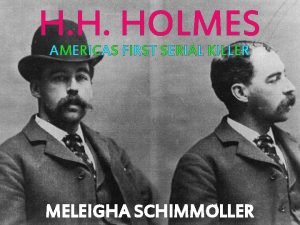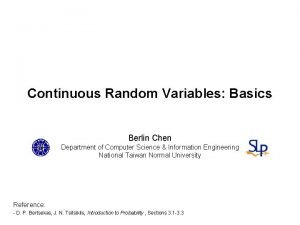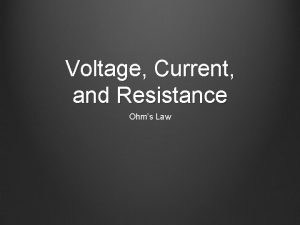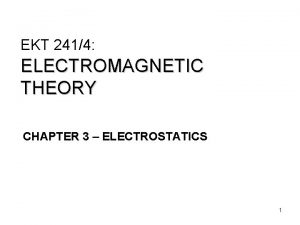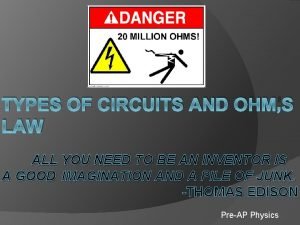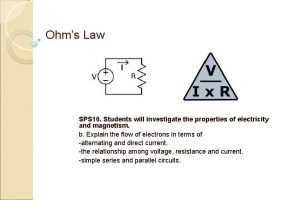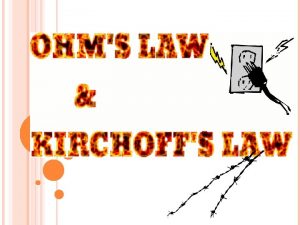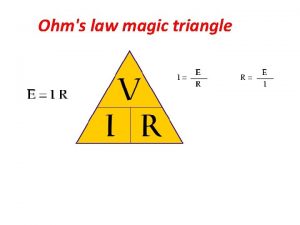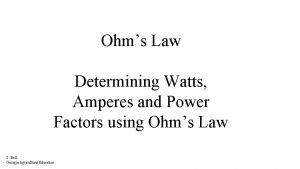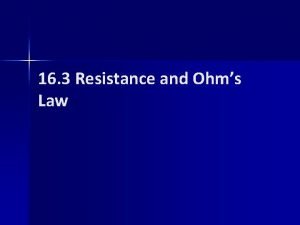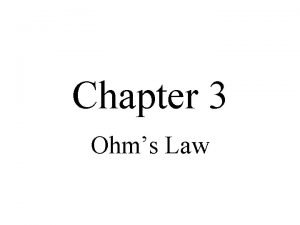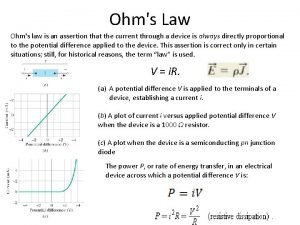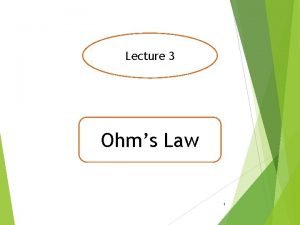From Holmes Law to Ohms Law Jim Chen









- Slides: 9

Ω From Holmes’ Law to Ohm’s Law Jim Chen University of Minnesota Law School Law in the Age of Networks: Implications of Network Science for Legal Analysis University of Illinois Center for Advanced Study March 10, 2006

Privacy and Communication as Reciprocal Images • Privacy law protects the ability to keep information secret • Free speech jurisprudence generally favors broad dissemination of information • Sometimes law punishes all forms of communication. E. g. , Hoffa v. United States, 385 U. S. 293 (1966) • By contrast, we privilege communications between spouses, attorneys & clients, etc.

Law as the Conscious Structuring of Information Transfer (Vel Non) • Constitutional and common law doctrines involving privacy have a dynamic impact on interpersonal relations – Talking with coconspirators leads to criminal liability and loss of 4 th amendment protection – Talking with your spouse, physician, attorney, or cleric is favored • Dinner table conversation is the essence of being human • Cf. Federalist No. 10: The oxygen that feeds fire also sustains respiration and life – Don’t asphyxiate yourself in an effort to avoid getting burned – Madison knew chemistry had progressed beyond phlogiston!

Strahilevitz on Privacy as a Product of Social Networks • Lior Jacob Strahilevitz, A Social Networks Theory of Privacy, 72 U. Chi. L. Rev. 919 (2005) • Network structure is crucial to understanding the dynamics of privacy (and derivatively of communication) • Nodes, strong versus weak links, interaction between structure and culture

Key Variables Affecting Social Networks • Salience of information – Scandalous or valuable versus boring • Connectedness of nodes – Some are “supernodes”; others are recluses • Conductivity of nodes – What is the probability that a node will communicate new information? – Some social links are strong; others are weak • Complexity of information – Weak links transmit, except as to complex information • Durability of information • Veracity versus mendacity – Cf. signal versus noise

Ohm’s Law as a Static Representation of Holmes’s Law • To the extent that the “marketplace of ideas” operates within social networks, we can describe the transmission, suppression, and retention of information in terms used to describe electricity • This is a purely static model, with no power to describe, let alone predict, the evolution of these social networks

Ohm’s Law and Its Corollaries • • V = voltage (v) I = current (a) Z = impedance (Ω) R = resistance X = reactance C = capacitance (f) L = inductance (h) f = frequency (Hz) – f of DC = 0 Hz – AC has positive f

Electricity as an Analogy for Information Within Social Networks • Current or amperage (I) represents the salience of information • Impedance (Z), especially pure resistance (R), expresses the lack of conductivity between certain nodes • Analogizing complexity to frequency (f) allows us to use concepts of capacitive and inductive reactance (XC and XL) in analyzing information transmission – Simple information (like DC) is blocked by capacitors – Complex information (like AC) is blocked by inductors in proportion to its frequency • Durable information can be stored, as electrical energy can be stored within a capacitor • Further work? Ways of quantifying information-bearing signals versus noise shed light on truth v. falsehood

Thank You chenx 064@maroon. tc. umn. edu 612 -625 -4839
